Master Hot Tub Chlorine Levels for a Safe, Relaxing Soak
December 04th, 2024
December 04th, 2024
There’s something undeniably inviting about the gentle swirl of water in a hot tub, a personal oasis tucked away from the hustle and bustle of daily life. However, maintaining that crystal-clear serenity requires more than just filling it up and hopping in. One key element in ensuring a safe and enjoyable soak is the careful management of chlorine levels. Without the right balance, your hot tub can quickly turn from a relaxing retreat to a breeding ground for bacteria.
Understanding how much chlorine to add is crucial, not just for cleanliness, but for the overall health of your hot tub. Different factors determine the appropriate amount; the size of the tub, frequency of use, and the number of bathers all play a part. For instance, a friend of mine once decided to throw a hot tub party without considering the additional chlorine needed. The result? Cloudy water and a learning experience that emphasized the importance of proper dosing.
In this guide, we’ll delve into the specifics of measuring and adjusting chlorine levels, ensuring you can relax without worry. Whether you’re a seasoned hot tub owner or a newcomer, our detailed dosing chart will provide the clarity you need. Let’s embark on this journey to pristine water, making your hot tub not only inviting but hygienically sound.
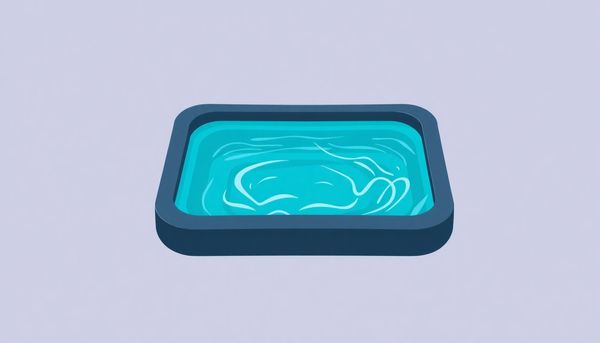
Keeping your hot tub's chlorine levels in check is like mastering a delicate dance. Too little, and your spa becomes a breeding ground for bacteria; too much, and the water turns into a chemical bath. It’s all about striking the right balance. For most hot tubs, maintaining a chlorine level of about 3 ppm is ideal. This ensures the water remains sanitary without posing a risk to your skin or the surfaces of your tub.
Calculating the correct dose starts with knowing your hot tub’s volume. For a standard 500-gallon tub, the rule of thumb is to add about 2 1/2 teaspoons of chlorine granules weekly. This equates to maintaining the desired chlorine level under normal circumstances. But there are times when you might find the water looking a bit murky or notice a sudden dip in chlorine levels. In such cases, you'll need to boost your efforts by superchlorinating, which involves adding 1 teaspoon per 100 gallons.
Consistency is key. Regular testing ensures you’re on the right track. Test strips offer a quick snapshot, but if precision is your game, invest in a digital tester. Like my neighbor, who routinely checks after each soak, you’ll soon develop an intuition for when the water needs a little extra care. Always err on the side of caution; it’s easier to add more later than to remove excess chlorine. Over time, this routine becomes second nature, ensuring your hot tub remains a safe and inviting retreat.
Selecting the perfect chlorine type for your hot tub can feel like navigating a maze of options. Each type carries its unique benefits and drawbacks, and the choice largely depends on your personal preferences and hot tub setup. Let's unravel this.
Granular chlorine, or sodium dichlor, often tops the list due to its fast-dissolving nature. As someone who savors the simplicity of tossing in a few granules after a relaxing soak, this option's quick action and effectiveness in outdoor tubs exposed to sunlight are appealing. The stabilizing agent within helps protect chlorine from being zapped by UV rays, making it ideal for open-air spas.
For those who prefer a more hands-off approach, slow-dissolving chlorine tablets might be tempting. They offer the convenience of setting up a floating dispenser and forgetting about it. However, it’s crucial to keep an eye on your dispenser settings to prevent overchlorination. My experience with them was mixed; while they worked great for consistent sanitization, I found granules were more efficient for my routine.
Liquid chlorine is another contender, though its potency and potential to alter pH levels make it less popular among hot tub enthusiasts. If you’re like me and prefer precision and control, you might steer clear of this option.
Ultimately, your choice should align with how you use your hot tub and your maintenance style. Whether it’s the ease of granules or the consistency of tablets, understanding each type helps maintain sparkling, safe water.
Ever find yourself standing on the edge of your hot tub, teaspoon in hand, pondering whether you've measured out the right amount of chlorine? Accurately measuring chlorine for your hot tub is crucial not just for maintaining clean and safe water but also for ensuring a pleasant soak without the burn of over-chlorination or the risks of under-sanitation. Too much chlorine can lead to skin irritation and damage your hot tub's surfaces, while too little leaves your hot tub vulnerable to bacteria and algae.
Before you start, know your hot tub's volume. Most manuals include this, or a quick search for your model online can help. Once you have this number, you're equipped to calculate the precise amount of chlorine needed. For instance, if you have a 450-gallon hot tub, and the goal is to maintain a 3 ppm chlorine level, you'll need roughly 2.25 teaspoons of chlorine granules each week. These calculations rely on using nearly 99% sodium dichlor granules, known for their fast-dissolving properties.
To ensure accuracy, investing in a reliable set of measuring tools, similar to what you might use in your kitchen, is a wise move. A teaspoon here, a tablespoon there, can make all the difference between crystal clear waters and an irritating chlorinated haze.
Moreover, testing your water regularly with test strips ensures you're staying within the ideal range. This hands-on approach not only keeps your hot tub inviting but turns the process into a straightforward ritual. Like any good story, a hot tub experience should be enjoyable from start to finish, without unexpected plot twists from fluctuating chlorine levels.
Navigating the waters of hot tub maintenance can be as thrilling as it is daunting. A crucial part of this journey involves regularly testing and adjusting the water levels to ensure a safe and soothing soak. Think of it as the secret handshake to prolonging your tub’s life and maximizing your relaxation.
To start, testing your water isn’t just a sporadic chore; it’s a continuous commitment. Armed with a reliable test kit or strips, you should check the chemical balance at least weekly. This helps you monitor not only chlorine levels but also pH and alkalinity, ensuring everything is within the safe zone. A well-balanced tub should maintain chlorine levels between 1-3 ppm. Anything above this might cause skin irritation, while lower levels could open the door to bacteria.
Once you’ve gathered your readings, the next step is adjustment. Suppose your chlorine level dips below the ideal range. In that case, gradually introduce more chlorine granules, following the guideline of adding 1/2 teaspoon per 100 gallons of water. It’s crucial to sprinkle these granules evenly across the water's surface rather than dumping them in one spot, allowing for even distribution.
On the other hand, if the levels are too high, patience becomes your ally. Allow the chlorine to naturally dissipate by keeping the cover off and letting the jets run, but avoid adding more chemicals immediately. Over time, you’ll gain a keen sense of your hot tub’s needs, making maintenance as second nature as the relaxing soak you crave.
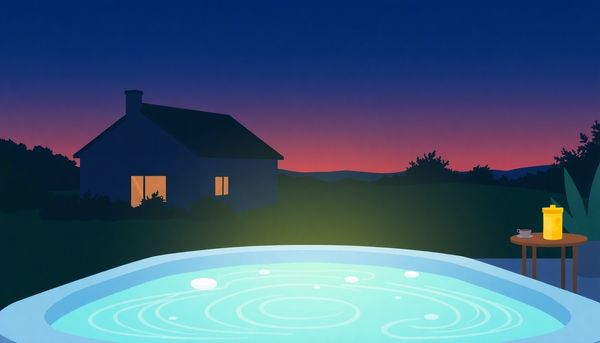
When your hot tub water begins to resemble murky soup rather than crystal-clear relaxation, it's time to consider superchlorination. This technique involves a high dose of chlorine to break through the cloudiness and restore your spa to its former glory. It’s like giving your hot tub a fresh start, especially after heavy usage or neglect.
Last winter, I returned from a week-long vacation to find my hot tub water cloudy and uninviting. With a chlorine level at 0 ppm, I knew a superchlorination was in order. For the 400-gallon hot tub in my backyard, this meant adding 4 teaspoons of nearly 99% sodium dichlor chlorine granules. This powerful formula ensures that contaminants causing the cloudiness are effectively neutralized.
Superchlorination isn't just about dumping in chlorine and walking away. The process demands a bit of patience and observation. After adding the necessary amount, keep the jets running with air valves off, ensuring the chlorine disperses evenly. Allow the water temperature to reach at least 85 degrees Fahrenheit to help the chlorine dissolve effectively. After 15 to 20 minutes, test the water again. The goal is to achieve a chlorine level that hovers around 3 ppm, ensuring the water is both safe and comfortable for use.
By tackling cloudy water proactively with superchlorination, you can maintain a healthy, inviting hot tub environment, keeping both the water and your relaxation time pristine.
Choosing the right chlorine for your hot tub can feel like navigating a maze of products, each promising crystal-clear water. Yet, understanding their unique properties makes this selection process much simpler. Sodium dichlor granules, a popular choice, dissolve quickly and offer immediate results, making them excellent for regular maintenance. They contain nearly 99% active chlorine, ensuring effective sanitation with minimal fuss. This option is ideal when you need a solution that works swiftly and efficiently.
On the flip side, slow-dissolving chlorine tablets maintain a steady chlorine level over time, but they require a floating dispenser to work effectively. Although convenient, they can sometimes lead to over-chlorination if the dispenser isn't set correctly. This method is better suited for those who prefer a more hands-off approach to water care.
Liquid chlorine, often used in pools, isn't typically recommended for hot tubs due to its high concentration and potential to upset the water's balance. It’s powerful, but tricky to measure accurately in the smaller volumes of a hot tub.
In personal experience, using granules has been a game-changer for quick adjustments after a weekend soak. They offer control and precision, allowing you to tweak levels based on usage and specific needs. Remember, whatever form you choose, testing your water regularly will ensure you maintain the perfect balance, safeguarding both your spa's health and your own.
Effective superchlorination, often a superhero for hot tub maintenance, can swiftly combat unwelcome issues like cloudy water or an unexpected zero chlorine reading. Once, when preparing my own tub for an impromptu gathering, I discovered the chlorine levels had plummeted. A swift superchlorination saved the day, making the water crystal clear in no time.
Understanding the right dosage is critical. Typically, adding 1 teaspoon (0.34 oz) of chlorine granules per 100 gallons of water ensures a thorough cleanse, raising chlorine levels quickly to tackle contaminants. For a standard 500-gallon hot tub, this translates to 5 teaspoons. It's a precise move — too much chlorine can lead to irritation or even damage the tub, while too little leaves the water unsafe.
The process begins with accurate measurements and a keen eye on your hot tub's volume. Armed with the right tools like a kitchen measuring cup, you can ensure precision. After adding the granules, patience is key. Allow the tub's jets to circulate the water for at least 15 minutes, ensuring the chlorine disperses evenly.
Finally, retesting the water is essential. Aim for a chlorine level around 3 ppm before inviting anyone in. This approach not only safeguards users but also extends the life of your hot tub. Superchlorination doesn’t just restore balance; it guarantees a clean, inviting soak every time.
Chlorine management in a hot tub isn't just about adding chemicals; it’s a delicate balancing act. One afternoon, while preparing for a relaxing soak, I realized my eyes stung slightly from the chlorine levels being too high. That day, I learned the importance of maintaining safe chlorine levels, which should hover around 3 ppm. Too little, and your soak turns into a breeding ground for bacteria; too much, and you may end up with irritated skin or damaged hot tub surfaces.
Start by arming yourself with a reliable test kit, one that's simple enough for weekly checks. These tests will guide your dosing, ensuring you don’t overshoot or skimp on chlorine. For a typical maintenance dose, a modest 1/2 teaspoon per 100 gallons of water is ideal, but remember, conditions vary. If your tub seems cloudy or hasn't seen chlorine in a while, you may need to up that to 1 teaspoon per 100 gallons for a more robust cleanse.
Staying within the 1-3 ppm range is crucial. Above 5 ppm, not only does your skin start to itch, but the hot tub’s material can also degrade. Below 1 ppm, you're inviting germs to your party. Each time you adjust the chlorine, patience is key—let it circulate, then re-check. Over time, you'll gain an intuitive sense of what your hot tub needs, ensuring every soak is safe and satisfying.
Navigating the world of hot tub maintenance, you quickly realize the importance of choosing the right type of chlorine. With so many options, understanding which chlorine suits your hot tub can be a game-changer. Many spa owners swear by granular chlorine, specifically sodium dichlor, due to its fast-dissolving nature and potent sanitizing properties. This type is particularly effective for weekly maintenance routines and is a favorite for its ease of use. Imagine adding a pinch of granules and knowing your water is on its way to being pristine.
For those who prefer a more passive approach, chlorine tablets might seem appealing. These slow-dissolving pucks can be placed in a floating dispenser, providing a steady release of chlorine. However, one must manage the dispenser settings carefully to avoid over-chlorination—a common pitfall that can lead to irritation and damage. Tablets are often better suited for pools, but smaller one-inch versions can work in hot tubs with caution.
Liquid chlorine, though used in pools, is generally not recommended for hot tubs due to its high concentration and potential to spike chlorine levels. It can be difficult to manage without proper dosing equipment. If ever caught in doubt, sticking with granular chlorine offers a blend of convenience and control, ensuring your hot tub is always ready for a relaxing soak. Your skin and hot tub will thank you for making the right choice.
Understanding the type of chlorine you need for your hot tub can feel like deciphering a secret code. Yet, it’s this piece of the puzzle that safeguards your relaxing soak from becoming a skin-irritating ordeal. Granular chlorine, often referred to as sodium dichlor, is a popular choice among hot tub enthusiasts. Known for its fast-dissolving properties, it’s great for quick adjustments and is particularly effective in outdoor tubs due to its stabilizer (CYA) content, which shields it from UV degradation.
Some folks opt for chlorine tablets, which dissolve slowly and consistently, ensuring steady sanitization. These tiny puck-shaped tablets are best for those who prefer a hands-off approach. However, their slower dissolution rate means they might not be ideal if you need to address water clarity issues swiftly.
Liquid chlorine, reminiscent of bleach, can also be used, though it’s generally less favored for hot tubs due to concentration challenges. It's crucial to measure accurately to avoid overchlorinating, as too much can lead to skin irritation and damage hot tub components.
Reflecting on my own experience, I remember initially using chlorine tablets in my hot tub. It seemed convenient until I realized the slow release wasn't combating the murkiness as effectively as I’d hoped. Switching to granular chlorine brought that crystal-clear sparkle back, proving that the choice of chlorine can make all the difference.
Chlorine dosing for hot tubs may seem daunting, but with a little knowledge, it becomes straightforward. Understanding the size of your hot tub is crucial. If your spa holds 500 gallons, you'll generally require 2 1/2 teaspoons of chlorine granules weekly for maintenance. For a different capacity, simply adjust the amount proportionally. This basic maintenance is key to ensuring your hot tub water remains safe, as chlorine levels should hover around 3 ppm.
Before adding chlorine, evaluating the current chlorine levels is essential. If you're starting from scratch or addressing issues like cloudy water, a stronger approach is necessary. In such cases, superchlorinating is recommended, which involves adding about 1 teaspoon per 100 gallons. This heightened dose helps rapidly address water clarity and sanitation issues.
Having a reliable test kit is another important step. Regularly checking your water not only confirms your chlorine levels but also helps maintain optimal pH and alkalinity. This balance ensures that chlorine works effectively.
In my experience, precise measurement is key. A teaspoon too much or too little can make a significant difference. I learned this lesson the hard way when a small miscalculation led to skin irritation for my family during a hot tub session. Adjusting dosages and retesting taught me the importance of careful measurement.
Don't forget that patience is part of the process. Allow the added chlorine time to disperse by waiting 15 minutes before retesting. And remember, it's always safer to add a little less and increase if necessary, rather than overdo it.
Balancing chlorine in your hot tub is like orchestrating a perfect symphony—each element must harmonize to ensure a clean and comfortable soak. Start by recognizing the pivotal role chlorine plays in maintaining sanitary water. The recommended concentration hovers around 3 ppm, a sweet spot that prevents bacteria without irritating your skin or corroding your hot tub's surfaces. Yet, the temptation to overdo it is real, especially when dealing with cloudy water or zero ppm readings. It's crucial to measure precisely and adjust based on your spa’s specific needs.
Each hot tub is unique, demanding tailored care. My own experience taught me the importance of knowing the water volume. I once added too much chlorine because I underestimated the volume of my spa, resulting in an uncomfortable soak. A simple kitchen scale or measuring spoon can prevent such mishaps. Additionally, your hot tub's exposure to sunlight affects chlorine stability due to UV degradation, a factor often overlooked.
Use chlorine granules for their rapid dissolution and effectiveness, but remember, slow and steady wins the race. Incorporate routine testing into your maintenance schedule. Testing after each chlorine addition allows for adjustments and ensures levels remain within the optimal range. By avoiding shortcuts and respecting the chemistry behind your hot tub, you’ll master safe chlorine levels, all while keeping your water crystal clear and inviting for those relaxing moments you cherish.
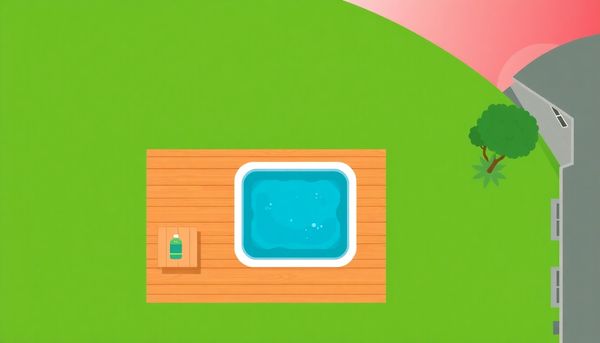
Chlorine is the unsung hero of a clean hot tub, but too much of this chemical can turn a relaxing soak into a skin-irritating ordeal. Overchlorination not only causes discomfort but can also lead to corrosion of your hot tub’s surfaces, a costly mistake no owner wants. Ensuring chlorine levels hover around the safe 3 ppm mark is crucial, but what happens when you add too much?
Overchlorination often stems from a misunderstanding of how much chlorine is actually needed. A 500-gallon hot tub requires only about 2 1/2 teaspoons of chlorine granules weekly for maintenance. Yet, the temptation to add a bit extra “just in case” can be strong, especially after a party or during warmer months when usage spikes. Unfortunately, more isn't always better. Excess chlorine can degrade the tub’s components over time, leading to leaks or other damage.
In my own experience, I once miscalculated and added twice the necessary chlorine after a particularly lively weekend. The result was not only a pungent odor but also an uncomfortable skin reaction for my next soak. A simple water test followed by partial water replacement helped rectify the situation.
To avoid such scenarios, always measure carefully and test your water regularly. If your chlorine levels exceed the 5 ppm threshold, let the water sit uncovered to allow chlorine to dissipate naturally. In extreme cases, consider draining some water and refilling with fresh. Patience and precision are your best allies in maintaining a healthy chlorine balance.
Maintaining the right chlorine level in your hot tub isn't just about following instructions; it's about understanding the chemistry involved and how it affects your relaxation oasis. To keep your water sparkling clean and safe, it's crucial to aim for a chlorine level of around 3 ppm—just enough to fend off unwanted bacteria without causing irritation or damaging your hot tub surfaces. However, finding this balance can sometimes feel like a tightrope walk.
Consider the variety of factors that can influence your chlorine needs. The size of your hot tub is the starting point: a 500-gallon tub requires roughly 2 1/2 teaspoons of chlorine granules weekly for ordinary maintenance. Yet, if your hot tub resembles the aftermath of a neighborhood swimming party or if the water looks cloudy, you might need to up the ante with a more robust dose—approximately 1 teaspoon per 100 gallons for superchlorination.
Vigilance is key. Regular testing becomes your best ally, shedding light on whether your chlorine levels have dipped too low or soared too high. Testing once a week, and especially after adding chlorine, will help in fine-tuning the chemical balance. Think of it as a ritual; find a quiet Saturday morning, cup in hand, and measure out those granules with precision. Over time, this habit not only keeps the water pristine but also transforms your hot tub into a serene escape, free from chemical worries.
Getting the water chemistry just right in your hot tub is akin to crafting a perfect cup of coffee. You start with some knowledge, incorporate a bit of trial and error, and soon, you’ll find your footing. Testing and adjusting water levels are crucial steps to maintaining a safe, comfortable soak. Start by investing in reliable test strips or a liquid test kit. These tools are your compass, guiding you through the chemical maze to ensure the water’s pH, alkalinity, and chlorine levels are spot-on.
After testing, note any imbalances. If your chlorine levels are low, your hot tub may become a breeding ground for bacteria, resulting in murky, unpleasant water. Conversely, too much chlorine, and you’re left with irritating fumes and itchy skin. Aim for that sweet spot: a chlorine level of around 3 ppm. This ensures both safety and comfort without unnecessary harshness.
Once you've got your test results, consider how much water your hot tub holds. Remember, a little chlorine goes a long way. For instance, in a 500-gallon hot tub, a mere 2 1/2 teaspoons of chlorine granules per week suffices for maintenance. If adjustments are necessary, make them gradually. Sprinkle chlorine granules evenly across the water while the jets are on, encouraging even distribution. Give the water some time before retesting; patience is key here. This methodical approach helps you avoid the pitfalls of overcorrection and gradually leads to a perfectly balanced hot tub.
Selecting the right chlorine product is akin to finding the perfect ingredient in a recipe; it ensures your hot tub remains a haven of relaxation, not irritation. The market offers several options, each with distinct advantages. Chlorine granules, often called sodium dichlor, are a favorite for their rapid dissolving properties. They fit seamlessly into a weekly maintenance routine, allowing for precise control over dosages. For my own hot tub, I rely on these granules; just a half teaspoon per 100 gallons keeps my water crystal clear without fuss.
Some hot tub owners opt for chlorine tablets for their hands-off convenience. These slow-dissolving pucks are placed in a floater, maintaining consistent chlorine levels over time. However, I find them less ideal for hot tubs. Tablets can lead to uneven chlorine distribution and the risk of overchlorination if not monitored closely. They might suit those who prefer a less frequent maintenance schedule, but it’s crucial to adjust the floater to prevent excess dosing.
Liquid chlorine presents another alternative, though it demands careful measurement due to varying concentrations. Typically, adding one to two ounces suffices for 500 gallons. Yet, personal experience has shown that the simplicity and precision of granules outweigh the occasional messiness of liquid solutions.
Ultimately, frequent testing remains essential, regardless of which form you choose, ensuring your water remains at the optimal 3 ppm. Balancing effectiveness with convenience, you can enjoy crystal-clear, inviting waters with minimal effort.
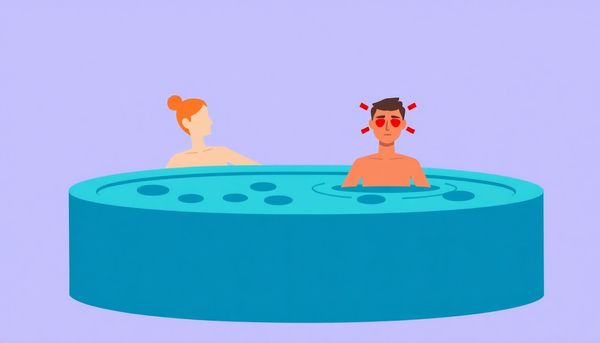
Understanding the subtle art of balancing water chemistry in your hot tub can be as crucial as it is rewarding. The key is regular testing to ensure that your water's pH and alkalinity levels are in harmony. When these levels are off, chlorine becomes less effective, leading to a host of issues that no hot tub owner wants to face.
Start by getting a reliable test kit. While test strips offer quick results, a liquid test kit provides more accuracy, revealing the nuanced levels of pH, alkalinity, and chlorine with precision. Imagine the ease of knowing exactly where your water stands, and the confidence that comes with it. This proactive approach can save both time and resources in maintaining your spa’s pristine condition.
Balancing your water means aiming for a pH level between 7.2 and 7.8 and maintaining alkalinity between 80 to 120 ppm. If the pH is too low, your water becomes acidic, potentially damaging your hot tub and irritating your skin. Too high, and it can lead to scale formation, clouding your once-clear waters. Total alkalinity acts as a buffer for pH, so adjusting it first can make balancing pH much easier.
Regularly tweaking these elements keeps your chlorine working effectively, ensuring a safe and pleasant soak every time. By committing to this routine, you not only extend the life of your hot tub but also enhance each moment spent in it.
Understanding the intricacies of maintaining the right chlorine level in your hot tub can transform your soaking experience from a mere dip to a rejuvenating ritual. Your goal is to achieve a chlorine concentration of approximately 3 ppm. This level ensures a clean and safe environment, allowing you to unwind without the worry of waterborne nasties. Yet, achieving this balance can be tricky if you’re not careful; too little chlorine can lead to unsanitary conditions, while an excess can cause skin irritation or damage to your hot tub’s surfaces.
Chlorine granules are a popular choice for many because they dissolve quickly and effectively, directly tackling contaminants. For general maintenance, a simple rule of thumb is to add about 1/2 teaspoon of chlorine granules per 100 gallons of water weekly. Consider a typical 500-gallon spa; you’d sprinkle around 2 1/2 teaspoons, which maintains optimal cleanliness without overwhelming your senses.
However, certain situations require more than routine care. If your water appears cloudy or tests at 0 ppm chlorine, a more substantial dose is necessary. Superchlorination, achieved by adding 1 teaspoon of chlorine per 100 gallons, can swiftly restore clarity and safety. Always remember, though, that testing is crucial. A quick dip with your test strip will confirm whether you've hit that sweet spot, or if an adjustment is needed. Over time, with practice and testing, managing your hot tub’s chlorine levels becomes second nature.
Hot tub maintenance often feels like solving a puzzle. While chlorine granules are the popular choice, understanding the nuances of different sanitizing methods can save you from unnecessary headaches. Each option has its strengths, and knowing them can enhance your hot tub experience.
Chlorine granules, frequently recommended, offer fast dissolution and direct application, making them ideal for regular maintenance. I remember when I first got my hot tub – the ease of sprinkling granules and having them work quickly was a game-changer. But for those who prefer a more hands-off approach, slow-dissolving chlorine tablets might be appealing. They release a steady amount of chlorine and are well-suited for maintaining consistent levels, although they require careful monitoring to prevent over-chlorination.
On the other hand, liquid chlorine offers the convenience of quick dosing but varies in concentration. This can require more frequent testing to ensure water balance, which might not be everyone's cup of tea. Then there's the debate between chlorine and non-chlorine shock treatments. While the former is potent and effective for addressing murky water, non-chlorine shock revives your existing sanitizer, allowing your chlorine or bromine to work more efficiently.
Ultimately, the choice boils down to your maintenance style and water conditions. Balancing convenience with effectiveness is key. Experimenting with different methods can help you find what suits your lifestyle best, keeping your hot tub inviting and ready for relaxation.
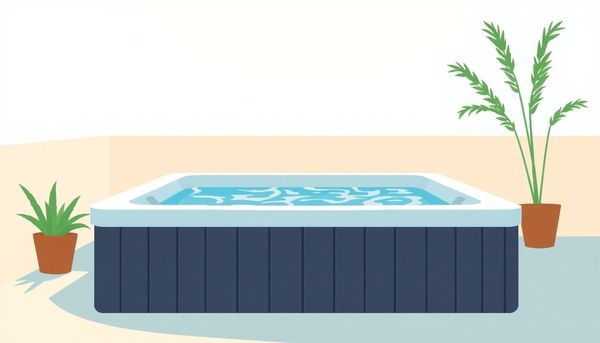
This article provided insights into maintaining your pool. Start your pool care journey today!
Want to become a pool maintenance expert? Our free Pool School course covers everything you need to know about pool care. From basic maintenance to advanced troubleshooting, you'll learn how to:
Join over 10,000 pool owners who have already transformed their pool care routine. Get started with our free Pool School course today!